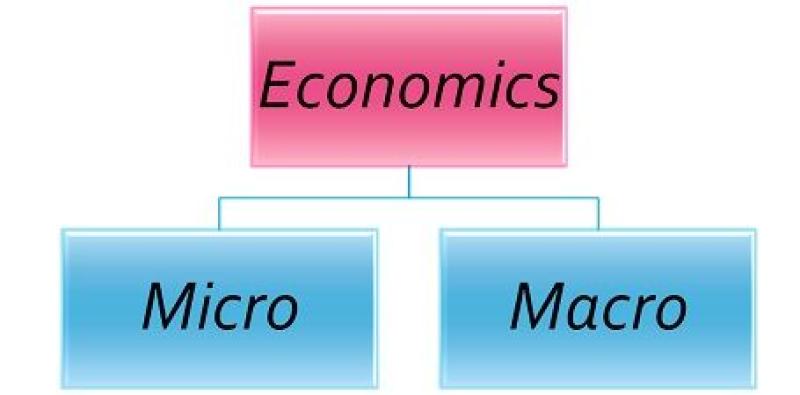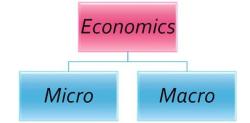What are the types of macroeconomics?
Macroeconomics is a broad field of study that encompasses various approaches and perspectives to understand and analyze the overall economy. Different types of macroeconomic studies focus on specific aspects of economic activity or use distinct methodologies. Here are some common types of macroeconomics studies:
Classical Macroeconomics:
- Classical macroeconomics is rooted in the ideas of classical economists such as Adam Smith and David Ricardo. It emphasizes the role of free markets, the importance of supply and demand, and the self-regulating nature of the economy. Classical economists typically advocate for limited government intervention.
Keynesian Macroeconomics:
- Developed by John Maynard Keynes in response to the Great Depression, Keynesian macroeconomics focuses on the role of government in stabilizing the economy. It emphasizes the impact of aggregate demand on economic output and supports the use of fiscal policy (government spending and taxation) to manage economic fluctuations.
Monetarism:
- Monetarism, associated with economists like Milton Friedman, places a strong emphasis on the role of the money supply in influencing economic outcomes. Monetarists argue that controlling the money supply is crucial for maintaining price stability and achieving long-term economic growth.
New Keynesian Economics:
- New Keynesian economics combines elements of classical economics and Keynesian economics. It incorporates microeconomic foundations into macroeconomic models and analyzes how nominal rigidities, such as sticky prices, affect economic outcomes.
Real Business Cycle (RBC) Theory:
- RBC theory posits that fluctuations in economic activity are primarily driven by real shocks, such as changes in technology or productivity. It emphasizes the role of supply-side factors in shaping business cycles.
Austrian School of Economics:
- The Austrian School, represented by economists like Ludwig von Mises and Friedrich Hayek, emphasizes the importance of individual decision-making, entrepreneurship, and the role of the business cycle. It is critical of central planning and advocates for a decentralized market system.
Modern Monetary Theory (MMT):
- MMT challenges conventional views on government deficits and debt. It argues that countries with sovereign control over their currency can use fiscal policy more liberally without facing the same constraints as countries without such control.
Econometrics and Empirical Macroeconomics:
- This involves applying statistical and mathematical methods to analyze macroeconomic data. Researchers use econometric models to test hypotheses and draw conclusions about the relationships between different economic variables.
Behavioral Macroeconomics:
- Behavioral macroeconomics incorporates insights from behavioral economics into macroeconomic models. It explores how psychological factors, cognitive biases, and decision-making heuristics influence economic behavior at the aggregate level.
These different types of macroeconomic studies offer diverse perspectives on how the economy functions, the role of government, and the factors influencing economic outcomes. Researchers may draw on multiple approaches to gain a comprehensive understanding of macroeconomic phenomena.
Delving into the World of Macroeconomic Theories:
1. Main Branches and Theories:
Macroeconomics boasts a diverse landscape of schools of thought, each offering unique perspectives on the behavior of economies as a whole. Some prominent branches include:
- Classical Economics: Emphasizes market forces, natural equilibrium, and minimal government intervention. Key figures: Adam Smith, David Ricardo.
- Keynesian Economics: Focuses on aggregate demand and government's role in stabilizing the economy during downturns. Key figure: John Maynard Keynes.
- Monetarism: Highlights the role of money supply in influencing inflation and economic activity. Key figure: Milton Friedman.
- New Classical Economics: Combines classical and monetarist principles with rational expectations, arguing for limited effectiveness of government policies. Key figure: Robert Lucas Jr.
- New Keynesian Economics: Integrates some classical assumptions with Keynesian insights, acknowledging market imperfections and frictions. Key figures: Joseph Stiglitz, Paul Krugman.
2. Impact on Policymaking:
Different branches influence policymaking in distinct ways:
- Classical: Promotes free markets, deregulation, and fiscal discipline.
- Keynesian: Supports active government intervention through fiscal and monetary policies to counter economic fluctuations.
- Monetarist: Focuses on maintaining a stable money supply to control inflation and promote long-term growth.
- New Classical: Emphasizes limited policy intervention due to potential ineffectiveness and unintended consequences.
- New Keynesian: Seeks to tailor policies to specific economic conditions and market imperfections.
The choice of policy approach often depends on the context, prevailing economic conditions, and political landscape.
3. Practical Applications:
Macroeconomic theories have valuable real-world applications:
- Central Banks: Utilize models to guide decisions on interest rates and quantitative easing to manage inflation and economic growth.
- Governments: Design fiscal policies like taxation and spending to stabilize the economy during recessions and promote long-term prosperity.
- Businesses: Analyze economic trends and forecasts to inform investment decisions and risk management strategies.
- Individuals: Gain insights into economic conditions and factors influencing personal finance decisions.
4. Influence on Global Economies:
Macroeconomic forces and interconnectedness between nations play a significant role in global economic trends:
- International Trade: Affects national economies through exports, imports, and exchange rates.
- Global Financial Markets: Capital flows can impact national economies, influencing interest rates, currency values, and investment opportunities.
- International Policy Coordination: Collaborative efforts by governments and central banks can stabilize global economies and address pressing issues like climate change.
5. Recent Developments:
Macroeconomic research and debate are constantly evolving, with some recent trends including:
- Behavioral Economics: Integrating insights from psychology to understand decision-making in economic contexts.
- Financial Crisis Research: Analyzing the causes and consequences of financial crises to improve crisis prevention and response.
- Inequality and Distributional Issues: Examining the growing wealth gap and its implications for economic growth and social stability.
- Climate Change Economics: Assessing the economic impacts of climate change and designing policies for mitigation and adaptation.
By understanding the diversity of macroeconomic theories, their policy implications, and practical applications, we gain valuable insights into the ever-changing global economic landscape.


